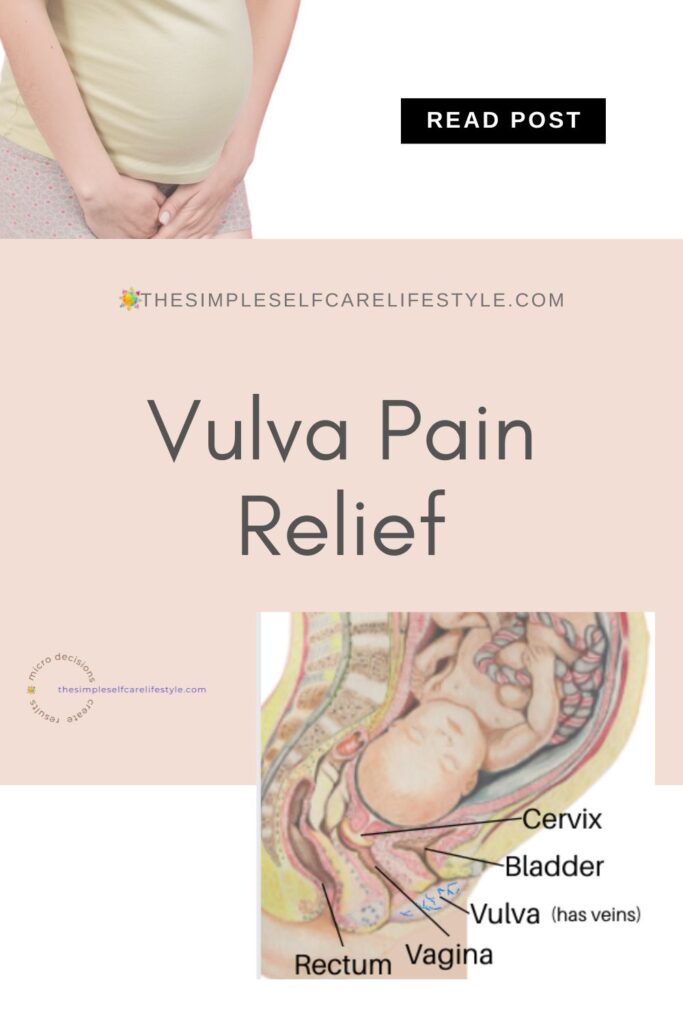How will my baby fit through my Pelvic Floor during delivery? What happens down there?
mo, What happens between my legs during labor and delivery so my baby fits?
What happens to my Pelvic Floor during labor and delivery is probably the second most asked question I would answer in Prenatal classes.
I thought today we’d do a quick overview to help you to be able to envision what goes on during labor and delivery when it comes to your pelvic floor.
The overview might also be useful for you when it comes to forming specific pelvic floor questions that you could then ask your practitioner about at your next visit.
There is NO Silly Question.
Remember, there is no question too silly to ask. I studied anatomy, physiology, and kinesiology for years, and my studies didn’t discuss the pelvic floor much (if at all). Same with the diaphragm. Both KEY muscles when it comes to carrying, and delivering babies!
I HAD A TON of questions, which is one reason I am always ready to share ALL the anatomy of our pregnant bodies and how to leverage the way our body is set to work.
When we know what is going on, we can better nurture, protect, and work with the body during this amazing time!

Today: The Pelvic Floor. How it is set up to work during the labor and delivery of your baby and the support it receives.
- Your Pelvic Floor is made up of Muscles.
- Hormones help them to become more flexible.
- Your Uterus, also a Muscle, is working hard to help your pelvic floor get ready as well.
- Then, there are structural changes on the bones where the muscles attach.
- Add to that your amazing diaphragm muscle! You’ll be so happy you trained it!
Let’s start with the fact that we are built to carry and deliver babies.
In the FREE Webinar: Train these 3 Muscles for Pain-Free Pregnancy in just Minutes each Day! I share how your body is set up to carry, nurture, and protect you AND your baby during your pregnancy.
The same is true when it comes to delivering your baby.

Free PDF: 3 Safe & Effective Ab Exercises PLUS 2 Protective Ab Tips
The Pelvic Floor
The pelvic floor is the last spot where your little one will transition from inside your body to outside of it and into your arms.
He or she will pass through the softened and dilated cervix, vagina, and then out between the pelvic floor muscles.
The pelvic floor muscles are illustrated below. The view is from inside your body. The pelvic floor muscles surround and support the openings of your:
- Bladder
- Uterus
- Rectum

HOW DO PELVIC FLOOR MUSCLES STRETCH TO FIT MY BABY DURING DELIVERY? WHAT HAPPENS DOWN THERE?
The answer is that together your-
- Hormones
- Uterus Muscle (another muscle never talked about),
- Your Baby
- Pelvis Bones
- Diaphragm Muscle
work together to help stretch your pelvic floor.

Best Pelvic Floor Exercise…
Kegels will not work without training this muscle first. There is NO better exercise than this one to train your pelvic floor. I share why and the exact exercise to do. Step-by-step!
Feel better, Look Better, LIVE better…The Simple Self Care Lifestyle
Here’s what happens…
During labor and delivery, the pelvic floor undergoes a series of changes that are directed by your hormones.
The hormones are messaging your connective tissue, which includes your pelvic floor muscles. The message they are receiving is to increase their ability to stretch.
Research shares that the average stretching is enough to make room for an approximate 3.5 kg / 7.5lb baby (give or take) to safely go from the inside of your body (from your uterus) to the outside of your body into your arms. AMAZING!
Literally the weight of a bowling ball!- Luckily, though, your baby isn’t perfectly round like a bowling ball. This makes it easier for them to fit through the birth canal and then out.

Your baby is lanky instead of round. They will be slippery, which is also helpful, and their heads are flexible, so the bones protecting their brains can safely, temporarily overlap, reducing the size of their head if need be. – Your body and your baby’s body are just absolutely amazing!
During childbirth, the flexibility of the sutures allows the bones to overlap so the baby’s head can pass through the birth canal without pressing on and damaging their brain. During infancy and childhood, the sutures are flexible.
Here’s HOW YOUR PELVIC FLOOR MUSCLES WILL DO THEIR BEST TO STRETCH TO FIT YOUR BABY THROUGH.
Starting with Stage 1 of Labor.
During the first stage of labor, the hormones relaxin and estrogen play a significant role in helping the cervix dilate and thin while preparing the pelvic floor for labor and delivery.

Stage 2
The Uterus Muscle Contracts Stronger and Closer together, Helping to Incrementally Move Your Baby Downward
In Stage 2 (approximately 90 min stage), your uterus’s contractions get stronger and close enough together that they are more able to move your baby down the birth canal.
Looking at the last picture in the row, see how the baby’s head is now in contact with the cervix. The softened and thinning cervix is what they are always talking about with dilation numbers.
This is wonderful because the added physical pressure from your baby’s head will help the cervix thin and open further. Once nicely open, the baby’s head places pressure on the pelvic floor muscles, helping to stretch them even more.
When we know things like this, it is easier to be calmer as well as more patient with our labor. Understanding that the contractions, hormones, baby’s position, and the positions you get in during labor are all helping the thing we want, which is the pelvic floor muscles to have enough time to respond, stretch, and get ready for your baby to move down and out
Each of the pieces:
- The hormones,
- contractions,
- and then the physical downward pressure from the baby’s head
are helping the pelvic floor to stretch. There’s more help!
First, a Quick Re-Cap:
- The pelvic floor is stretching more and more due to:
- your hormones and the
- muscle contractions of the uterus and the
- physical pressure from your baby’s head as he/she moves downward in the birth canal.


Best Pelvic Floor Exercise…
Kegels will not work without training this muscle first. There is NO better exercise than this one to train your pelvic floor. I share why and the exact exercise to do. Step-by-step!
Feel better, Look Better, LIVE better…The Simple Self Care Lifestyle
Now for 2 more helpers
Helper 1, the bones that your pelvic floor muscles attach to.
Your hormones that have been messaging your pelvic floor muscles to be lax are messaging the ligaments that hold the 2 sides of your pelvis together, too!
This is so the 2 bones can spread- up to 2.5 cm (approx 1 inch) if need be.
Here’s a photo of the pubic symphysis pointing to the area that is going to help make room for your baby if need be by spreading up to around an inch. (2.5 cm).

The front area where the 2 halves of the pelvis is called the pubic symphysis. It is held together in the front by 4 ligaments. The ligaments are connective tissue, which means they are receiving the messaging to be lax
Why? Should these ligaments be lax?
During pregnancy, it is a mechanism to make more space for your baby. If need be, the laxity can create more room in the third trimester for the baby to descend.
This area is often sensitive or even painful and is felt by most moms when their little one is positioning or settling in down further, and then again for delivery. It is important to pay very close attention to this when choosing exercises or activities
Your pelvic floor muscles are attached to the 2 bones. When the bones are able to move a bit, so will your pelvic floor muscles.

In delivery your pubic symphysis is prepping to spread if need be as well.
One inch may not sound like a lot, but if you separate any of your joints by an inch, that IS a lot. This is why we want to protect it by Training the right muscles at the right time and only using 1 stretch during pregnancy.
Your pelvic floor muscles stretch from your pubic bone in the front of your body to your tailbone (coccyx) in the back. The muscles extend outward on both sitting bones (ischial tuberosity) on the right and left sides of your pelvis,
(bold added)
The pubic symphysis is an area I focus on in the FREE Webinar Train these 3 Muscle Groups for a Pain Free Pregnancy in just Minutes each day– it is IMPERATIVE to know how to protect this area DURING your pregnancy.
Now your Pushing time!
Your diaphragm, the muscle we begin to train FIRST and keep training throughout your pregnancy in the Pain-Free Pregnancy, is ready to shine!!

It is a HUGE player in helping you work with your contractions to encourage your baby to move down, pressing on your pelvic floor more effectively.
The more effective your contractions are, the more opportunity for the pressure from your baby to stretch your pelvic floor slowly.
- Your diaphragm is also going to be a real hero when it’s time to push your baby downward with enough pressure to move past the pelvic floor muscles and out into your arms!
Here’s a photo of the different players that help stretch your pelvic floor:

Your body is working to protect YOU and your baby at all times.
Knowing how your body is set up to do that enables you to Nurture and Protect your body, and this, in turn, Nurtures and Protects your baby.
Stage 4 Post Delivery
As with any muscle that has gone through excess stretching, you’ll need to care for your pelvic floor muscles post-delivery. I will create a post on that in the near future
The Pelvic Floor During Labor & Delivery!

Re-Cap:
The Pelvic Floor is supported during the labor and delivery of your baby by your
- Hormones that are messaging for them to become more flexible.
- Your Uterus, also a Muscle, works hard to help your baby move down until its head reaches the pelvic floor, applying pressure.
- Then, there is the increased flexibility of the ligaments that connect the pelvis bones.
- The pelvic floor muscles are attached to these bones, and as they move apart, so can the muscles.
- Add to that your fantastic diaphragm muscle! You’ll be so happy you trained it!

Other Posts That May Interest You:

Over the 4 decades of teaching thousands of moms-to-be, there was always a common story they shared with other pregnant moms post-delivery: That was how powerful knowing what is going on in their bodies.
It helped reduce fear during different parts of labor and delivery. This was because they had an understanding of what their body was doing and why, and they could use the training and specific exercises to find positions, motions, and breathing that worked for them.
At the end of delivery, when it was time to push, they KNEW that daily training of their body’s most important stabilizing muscles ( Group 1) enabled them to push effectively.
Empowering women is the best use of my decades of knowledge, and it brings me great joy to provide posts, references, resources, tips, tools, and programs to moms seeking self-care.
As with everything I share here on The Simple Self Care Lifestyle, we take advantage of knowing how the body is set up to work so we can leverage and implement things that effectively work to make our lives better. The BEST form of Self Care there is


Best Pelvic Floor Exercise…
Kegels will not work without training this muscle first. There is NO better exercise than this one to train your pelvic floor. I share why and the exact exercise to do. Step-by-step!
Feel better, Look Better, LIVE better…The Simple Self Care Lifestyle
Grab your FREE PDF: 3 Safe, Effective Ab exercises PLUS 2 Protective Ab Tips
This free Webinar shares with you the 3 Muscle groups to Exercise and why, plus I debunk the way you’ve been told to work your ABS.
I hope you join me at the webinar. I had a wonderful time recording it with the moms who attended live.
The entire webinar, including moms’ questions at the very end, is included.
What’s also cool is that you can ask me your questions as you watch it! I often drop in during the scheduled times, and if I’m there, I’ll answer live.
If I’m not there, I will still receive anything you place in chat! REMEMBER there is never a question too silly.
If you are interested in nurturing and protecting your body and your baby using the RIGHT exercises throughout your pregnancy that will benefit you now, in labor and delivery, I’ve created this webinar with you in mind.
Have Questions? Here’s an easy way to send them off to me:
Other Posts That May Interest You:
Ab Separation: Check & 2 Exercises
What is it AB Separation? Who Gets it, How to Check for it. Two Exercises.
Feel better, Look Better, LIVE better…The Simple Self Care Lifestyle
Exercise for Recti Diastasis. Strengthen Your Core.
Exercise for recti diastasis (ab separation) that is beneficial for all of us- lifelong.
Feel better, Look Better, LIVE better…The Simple Self Care Lifestyle
The Simple Self Care Lifestyle
self care
Post categories






SHOP Products
Personal Products
Healthy Home
Quality Supplements
Things to Keep Handy
Quality Food Sources
Simple Self Care Programs
Popular Posts
THe simple self care lifestyle
Simplify

I’m glad you are here…
🌿 References for you
Safier RA, Cleves-Bayon C, Gaesser J. Neurology. In: Zitelli BJ, McIntire SC, Nowalk AJ, Garrison J, eds. Zitelli and Davis’ Atlas of Pediatric Physical Diagnosis. 8th ed. Philadelphia, PA: Elsevier; 2023:chap 16.
Zachovajeviene B, Siupsinskas L, Zachovajevas P, Venclovas Z, Milonas D. Effect of diaphragm and abdominal muscle training on pelvic floor strength and endurance: results of a prospective randomized trial. Sci Rep. 2019 Dec 16;9(1):19192. doi: 10.1038/s41598-019-55724-4. PMID: 31844133; PMCID: PMC6915701.
more references for you
Finta, Regina et al. “The effect of diaphragm training on lumbar stabilizer muscles: a new concept for improving segmental stability in the case of low back pain.” Journal of pain research vol. 11 3031-3045. 28 Nov. 2018, doi:10.2147/JPR.S181610
Park, Hankyu, and Dongwook Han. “The effect of the correlation between the contraction of the pelvic floor muscles and diaphragmatic motion during breathing.” Journal of physical therapy science vol. 27,7 (2015): 2113-5. doi:10.1589/jpts.27.2113
Sapsford RR, Hodges PW. Contraction of the pelvic floor muscles during abdominal maneuvers. Arch Phys Med Rehabil. 2001 Aug;82(8):1081-8. doi: 10.1053/apmr.2001.24297. PMID: 11494188.































